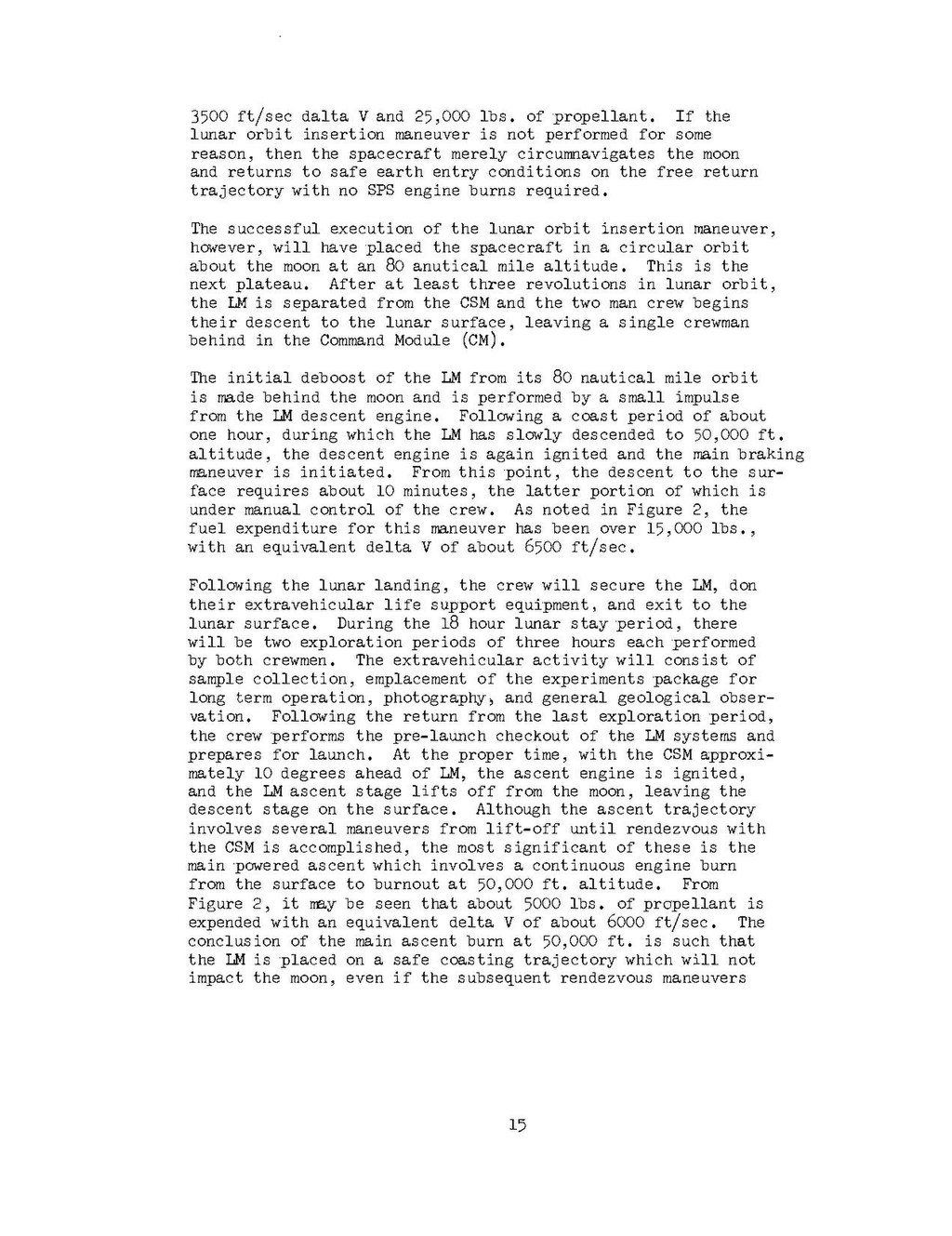3500 ft/sec dalta V and 25,000 lbs. of propellant. If the lunar orbit insertion maneuver is not performed for some reason, then the spacecraft merely circumnavigates the moon and returns to safe earth entry conditions on the free return trajectory with no SPS engine burns required.
The successful execution of the lunar orbit insertion maneuver, however, will have placed the spacecraft in a circular orbit about the moon at an 80 anutical mile altitude. This is the next plateau. After at least three revolutions in lunar orbit, the 1M is separated from the CSM and the two man crew begins their descent to the lunar surface, leaving a single crewman behind in the Command Module (CM).
The initial deboost of the LM from its 80 nautical mile orbit is made behind the moon and is performed by a small impulse from the LM descent engine. Following a coast period of about one hour, during which the LM has slowly descended to 50,000 ft. altitude, the descent engine is again ignited and the main braking maneuver is initiated. From this point, the descent to the sur face requires about 10 minutes, the latter portion of which is under manual control of the crew. As noted in Figure 2, the fuel expenditure for this maneuver has been over 15,000 lbs., with an equivalent delta V of about 6500 ft/sec.
Following the lunar landing, the crew will secure the LM, don their extravehicular life support equipment, and exit to the lunar surface. During the 18 hour lunar stay period, there will be two exploration periods of three hours each performed by both crewmen. The extravehicular activity will consist of sample collection, emplacement of the experiments package for long term operation, photography, and general geological observation. Following the return from the last exploration period, the crew performs the pre-launch checkout of the LM systems and prepares for launch. At the proper time, with the CSM approximately 10 degrees ahead of LM, the ascent engine is ignited, and the LM ascent stage lifts off from the moon, leaving the descent stage on the surface. Although the ascent trajectory involves several maneuvers from lift-off until rendezvous with the CSM is accomplished, the most significant of these is the main powered ascent which involves a continuous engine burn from the surface to burnout at 50,000 ft. altitude. From Figure 2, it may be seen that about 5000 lbs. of propellant is expended with an equivalent delta V of about 6000 ft/sec. The conclusion of the main ascent burn at 50,000 ft. is such that the LM is placed on a safe coasting trajectory which will not impact the moon, even if the subsequent rendezvous maneuvers
15
